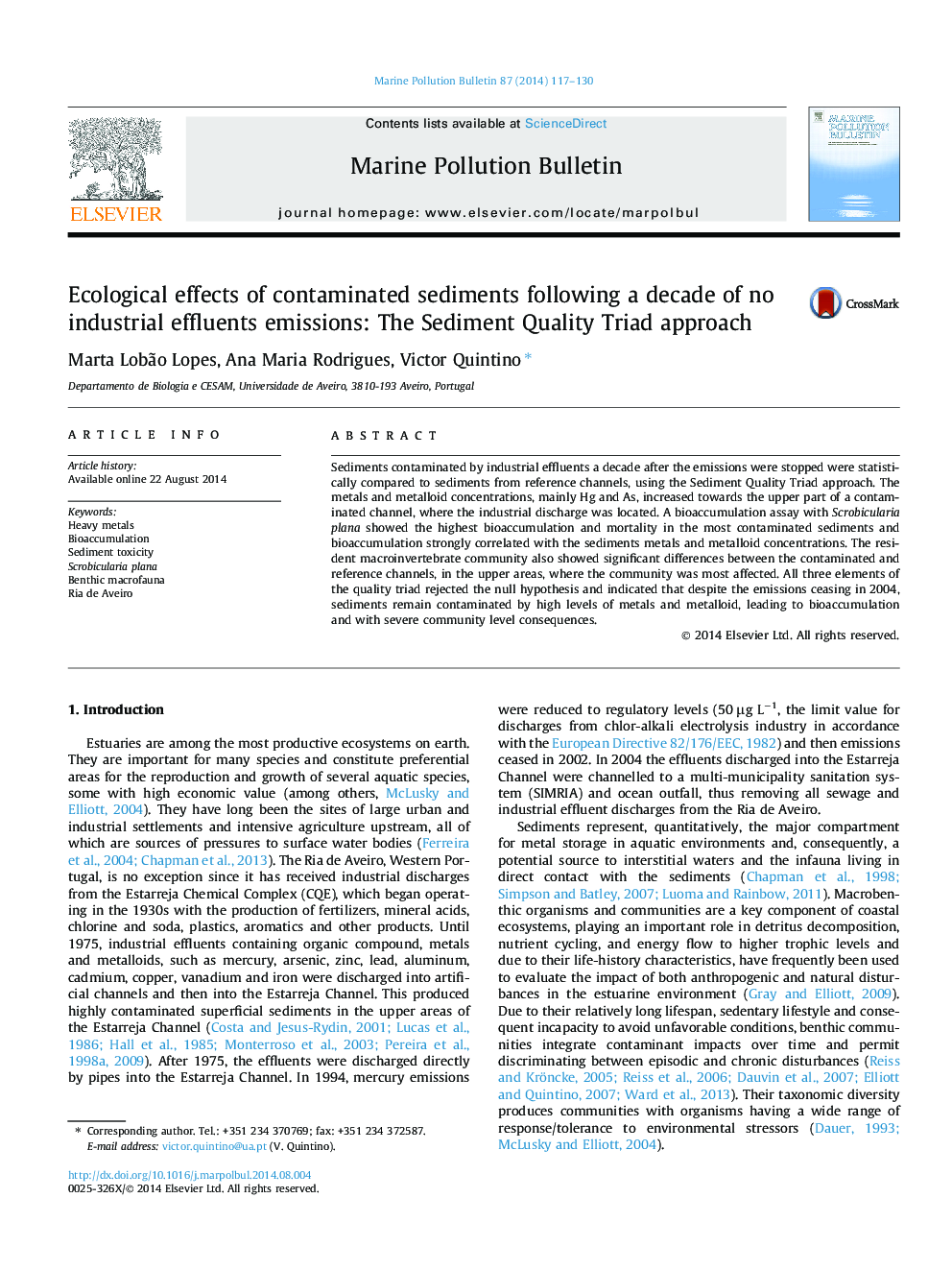| Article ID | Journal | Published Year | Pages | File Type |
|---|---|---|---|---|
| 6357626 | Marine Pollution Bulletin | 2014 | 14 Pages |
Abstract
Sediments contaminated by industrial effluents a decade after the emissions were stopped were statistically compared to sediments from reference channels, using the Sediment Quality Triad approach. The metals and metalloid concentrations, mainly Hg and As, increased towards the upper part of a contaminated channel, where the industrial discharge was located. A bioaccumulation assay with Scrobicularia plana showed the highest bioaccumulation and mortality in the most contaminated sediments and bioaccumulation strongly correlated with the sediments metals and metalloid concentrations. The resident macroinvertebrate community also showed significant differences between the contaminated and reference channels, in the upper areas, where the community was most affected. All three elements of the quality triad rejected the null hypothesis and indicated that despite the emissions ceasing in 2004, sediments remain contaminated by high levels of metals and metalloid, leading to bioaccumulation and with severe community level consequences.
Keywords
Related Topics
Physical Sciences and Engineering
Earth and Planetary Sciences
Oceanography
Authors
Marta Lobão Lopes, Ana Maria Rodrigues, Victor Quintino,
